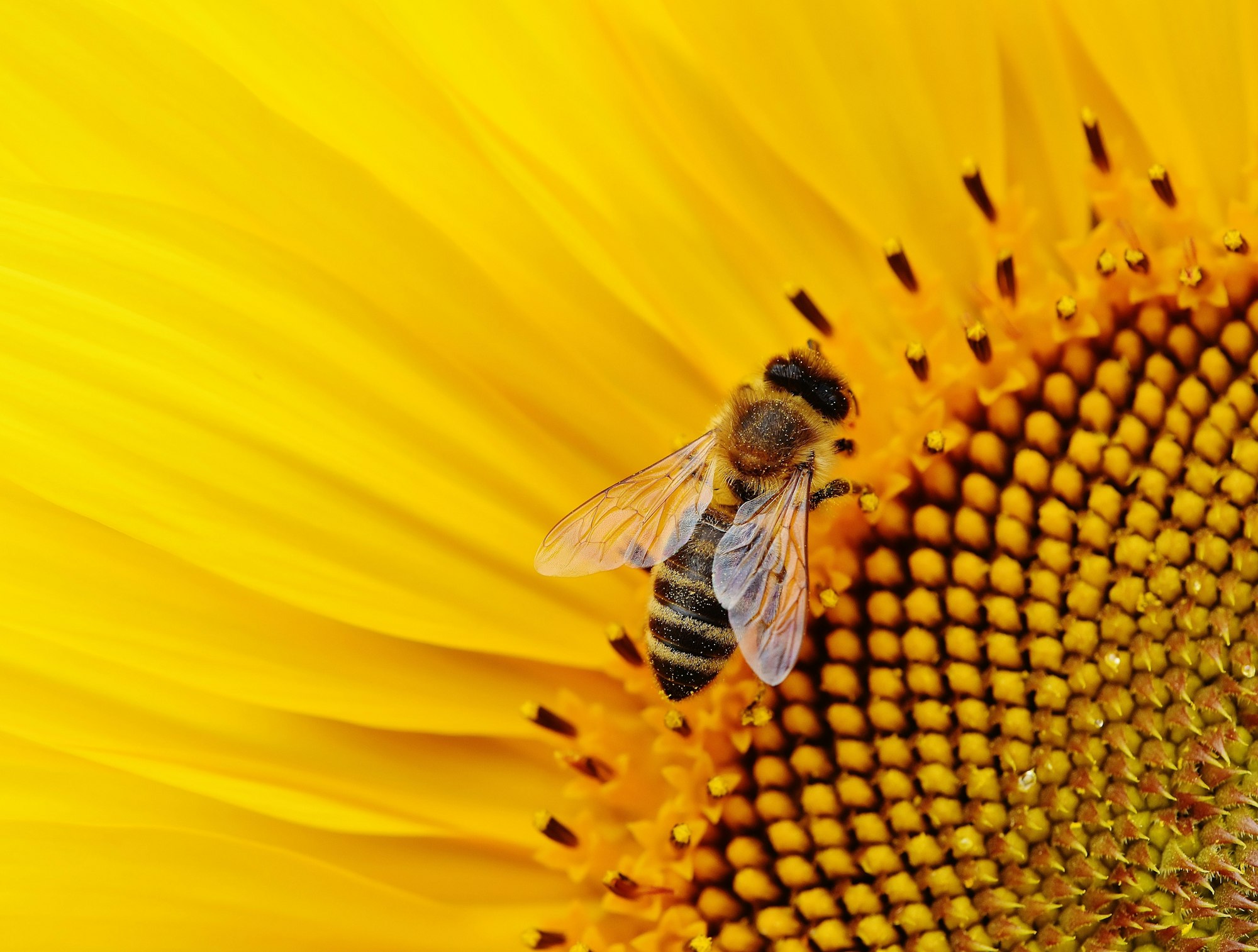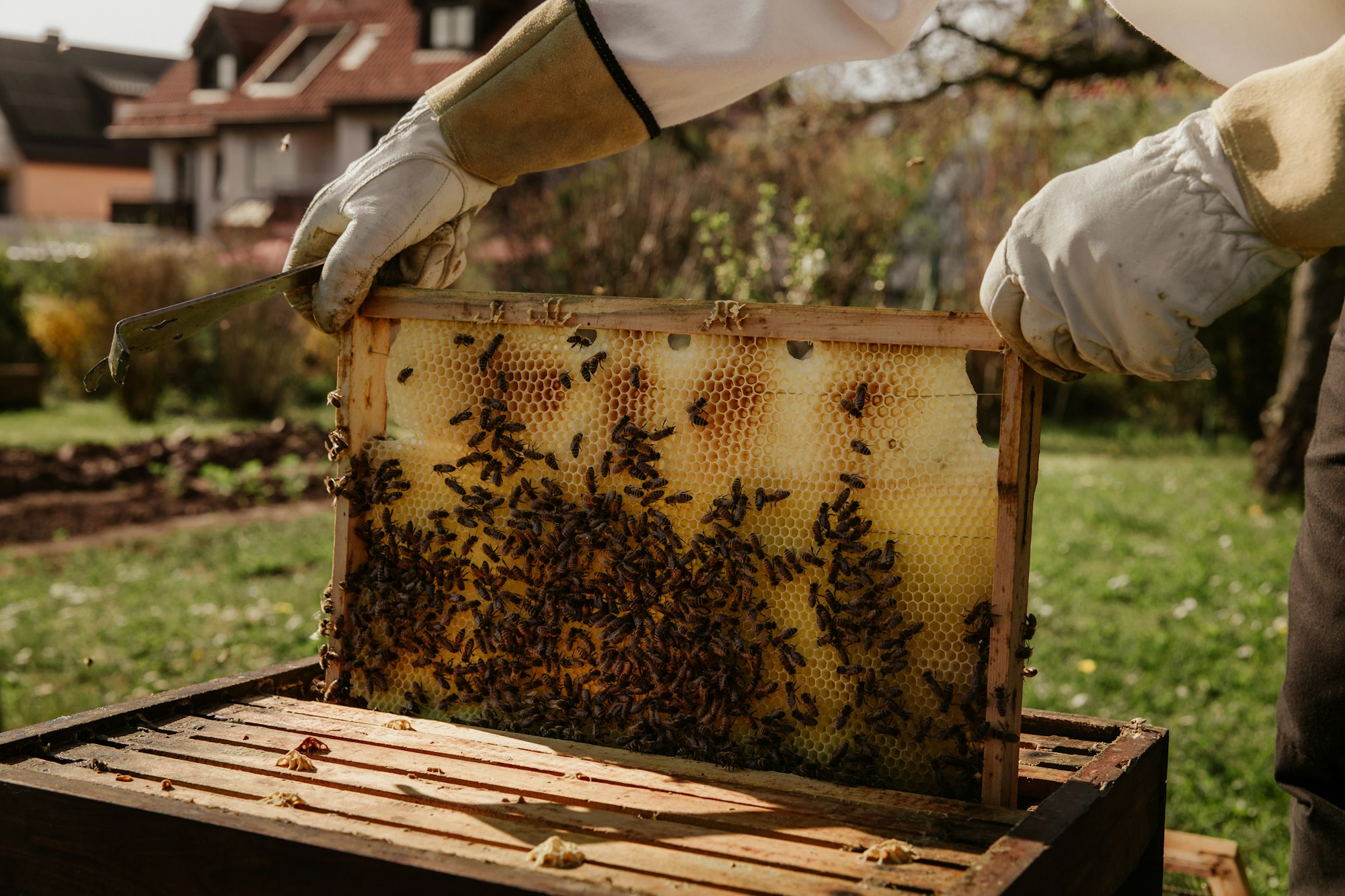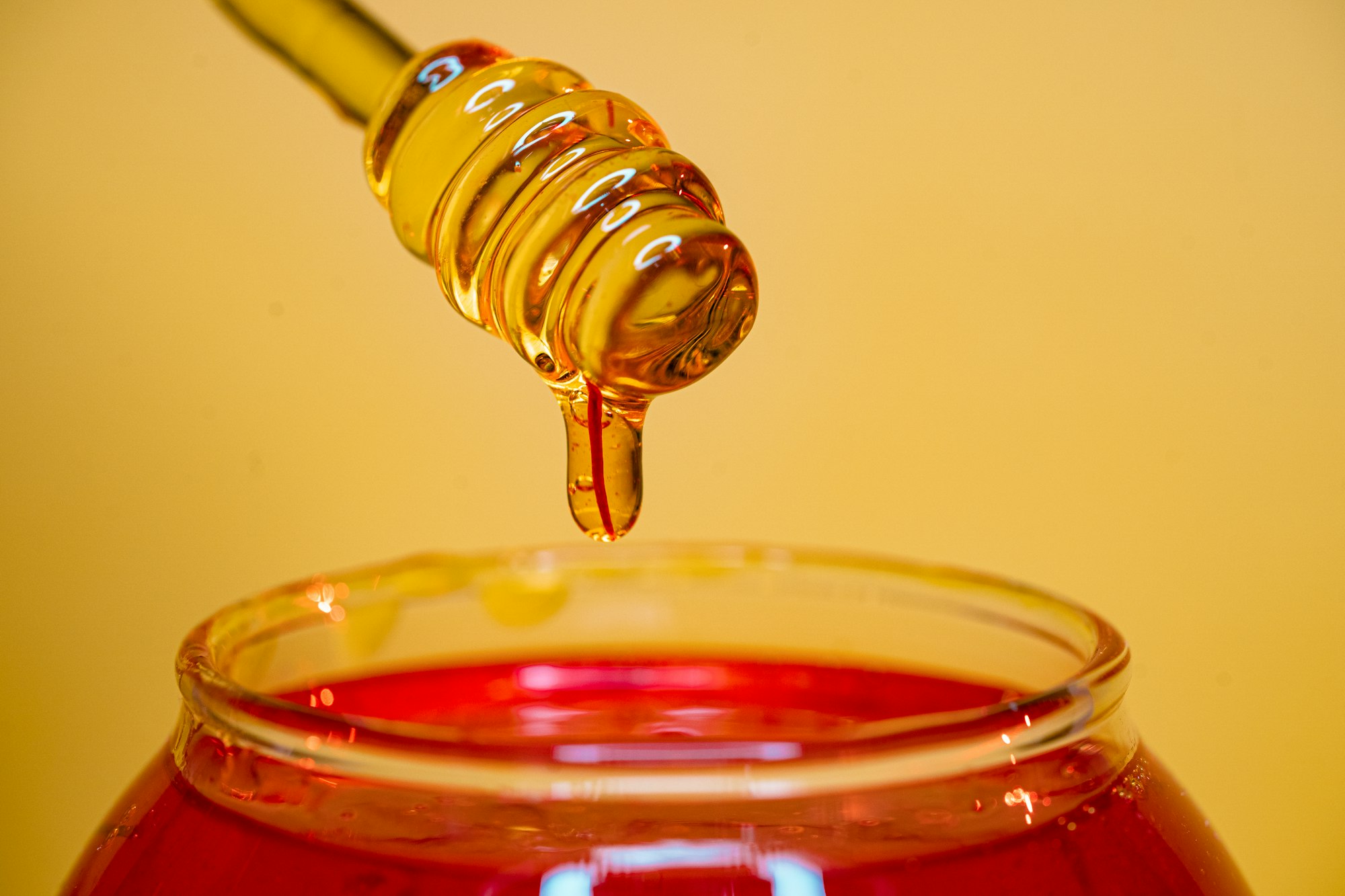Complex Communities - The Mechanisms Of A Beehive

Following on from the previous post on fruits, I thought it might be a good idea to give some background to how flowers can start to reproduce in the first place, via pollination. One particularly interesting method of this, I think, is how various insect species can work in symbiosis with plants to transport pollen to different flowers, receiving nutritional substances in return - with bumble bees being a great example. And, I gotta say, bees just have to be the most spectacular little creatures I've seen.
A couple of years ago, my mother started a farm where she grows organic crops and uses them to make artisan products that she sells for profit, shares them with her friends and family - or just uses for her home! It's an ambitious project, but what I thought was really cool was how she later began a dedicated terrain for apiculture (which is the fancy way of saying 'beekeeping'). This was apparently inspired by a mass of videos that she found online on the intelligence and organisation of beehives, as well as the information she found on how their global population has been (and is!) declining in almost every nation world-wide. My mom was having none of that.

As a witness to the progress, I became rather curious about bees myself, eventually watching my own videos and looking up research papers that could expand on their nature a bit. Did you know that, apparently, bumble bees can roam approximately 5 kilometres away from their hive to collect nectar before returning home? It's almost like they have their own ingrained GPS! (Which might link to the magnetoreception present in monarch butterflies?) They also possess a super specialised body structure for their role, and have developed biological tap-dancing mechanisms to communicate with their fellow hive workers. They are a complex species, and their list of machinations goes on - and on, and on, and on.
The Social Hierarchy
In a beehive, hidden from the outside world is a community of thousands of members working for one purpose only: to empower the hive and increase its chances of survival and growth. Though this mindset is only possible with the distinctly simple consciousness of insects, the result is a hyper-connected civilisation capable of achieving architectural and social feats the likes of which humans will probably never reach. One similarity between the two species, however, is their tendencies to establish social hierarchies.
First, to fuel the workspace and start turning its wheels, so to speak, comes the progenitor of all the members in a beehive - the queen. She is the largest bee in the hive, measuring twice the size of an average worker, and she is the only one of her kind. How is this possible? You see, when a new queen is selected, it is from a newly-hatched group of sister queens - each of which strives to eliminate the other candidates as soon as they are born. (Literally; queens have been observed to even dig into their sisters in their cells before stinging them to death. And this is made easier since queens have smooth stingers instead of barbed ones, which allows them to sting creatures multiples times without dying from it.) Once selected, the new queen copulates with male bees (called drones) before anchoring down for her primary role in life; reproduction. The queen's biology reflects this. A queen's average lifespan can go up to 6 years (the longest in the hive), and large mature ovaries allow the production of multitudes of egg cells throughout her time, with sperm-storing cavities known as the spermatheca that let her waste as little time as possible mating with the drones. As such, once a queen has gone through a controlled mating flight, she will generally never mate again and simply focus on laying eggs. Thousands of eggs. She can also communicate with her colony by spreadinig special pheromones from her glands, essentially giving her limited influence over where other bees should fly or if they should accompany her.

The majority of bees in a hive are female, and - besides from the queen - they are all referred to as workers. These do not mate and are generally the ones in charge of cleaning hive cells, feeding young larvae, acquiring nectar and pollen, producing honey, fighting off predators and synthesising royal jelly (which is a substance given to all larvae, but in copious amounts to candidate queen bees to stimulate their growth and ovary maturation). When they are born, they usually take care of the hive's internal issues first, later leaving the hive to operate outside almost full-time. In this way, the workers might be interpreted as the blue-collars of the bee community, a proleteriat under the control of a reigning body - like the queen. Interestingly, however, researchers have found that workers are actually the real decision-makers in a beehive. For instance, when a hive is becoming overpopulated and crowded, who's decision is it to swarm and split the colony in parts? The workers'. Likewise, when a queen bee has become incapable of laying eggs or producing hormones, the workers are able to replace her at any time with a more suitable substitute (which involves the strangely cruel process of surrounding the current queen to suffocate her to death). In a beehive, the orders are given not by a single member - but by its community's hive mind.
Lastly, we have the drones, and their only jobs, really, are to reproduce. Though they can be as large as the queen, drones are both the shortest-living bees and the most stagnant, neither acting to defend their hive nor working the tasks that maintain it. They sound kind of useless, huh? Well, a number of studies have suggested that they are nonetheless a vital part of bee species like the common bumble bee (Bombus impatiens). Drones have been observed to incubate larval eggs, for example, though workers do it better. Furthermore, they also hatch from haploid (containing one set of parent chromosomes) eggs, which triggers a set of signals that prevent female development and encourage male differentiation. In other words, both queens and workers can lay drone eggs without the need of fertilisation, thereby requiring less energy for the process. Drones may be lazy, but at least they're quite expendable!
Getting Nectar, Producing Honey And Dancing
Once a worker bee has finished her routine jobs in the hive after being born, she immediately vacates the area to start looking for nectar-rich flowers. She then lands on its stamen - the flower's reproductive organ that produces pollen - and takes up the nectar and pollen on it using her proboscis (a long, straw-like tongue that is used for drawing up and tasting food). The bee then uses some of the nectar as an energy source to fly back to the hive, storing the rest in a specialised 'honey stomach' where it starts to be digested and converted into honey. This is done through a convoluted yet incredibly efficient process that involves tens of enzymes - and a complex microbiome specific to her species of bee. Similar to our own gut flora, research on the topic has only just begun to escalate in the scientific community, and we know only a fraction of how the process occurs. What we do know, however, is astounding.
At the time of writing, the most studied honey stomachs are the ones of the honeybees (Apis mellifera) and the bumble bee. Research has shown that these bee species contain incredibly precise communities of gut bacteria - with only a handful of unique species making up 99 percent of every honeybee's gut flora - and that many of them are shared between both bumble bees and honeybees. Instead of evolving independently, this observation probably has to do with a common ancestor that they evolved from a long time ago. But, moreover, it has to do with the shared bacteria's ability to help fight back against virulent pathogens and to assist in their metabolism and nutrition - and particularly in converting nectar and pollen into honey. Studies have shown, for example, that Gilliamella family bacteria in honeybees can break down a polysaccharide in pollen walls called pectin, which would otherwise be indigestible to the bees. Furthermore, RNA sequencing techniques have found a number of other bacterial cultures in bees to have important roles in metabolising complex carbohydrates that make up both nectar and pollen, thereby making them essential to the production of honey. In other words, the honey in your cupboards is not just made by bees - it's made with the help of bacteria.

Once the worker bee has arrived at the hive again, she deposits the fresh honey in comb cells to feed young larvae and nurse bees (like drones and young workers). Already, her dedication to the cause is admirable; interestingly, though, she continues prepping the honey by fanning it with her wings to remove any excess moisture on it. Then she informs her colleague workers of where she found the honey through yet another specific procedure observed almost exclusively in bees - the waggle dance. In essence, this involves a bee repeatedly wiggling her body and moving in figure-eights to pinpoint the location of flowers in relation to the position of the sun, which informs other foragers where to fly next time they leave the hive. Social communication at its finest.
Unfortunately, though approximately a third of all plants in the world are pollinated by bees, their global population is falling. Deforestation, the use of pesticides and other such nasty human habits have caused this - and so the least we can do is get to know them our friendly pollinators better. One day, maybe we'll even do like the Netherlands and stop bee numbers from decreasing; but, until then, I'll just continue marvelling at their biology.
References
- Page, R. E. Jr. & Amdam, G. V. (2007). The making of a social insect: developmental architectures of social design. BioEssays: news and reviews in molecular, cellular and developmental biology, 29(4), 334–343. Retrieved from https://www.ncbi.nlm.nih.gov/pmc/articles/PMC2398704/
- Belsky, J. E. & Camp, A. A. & Lehmann, D. M. (2020). The Importance of Males to Bumble Bee (Bombus Species) Nest Development and Colony Viability. Insects, 11(8), 506. Retrieved from https://www.ncbi.nlm.nih.gov/pmc/articles/PMC7469185/
- Grüter, C. & Price, R. (2015). Why, when and where did honey bee dance communication evolve? Frontiers in Ecology and Evolution. Retrieved from https://www.frontiersin.org/articles/10.3389/fevo.2015.00125/full
- Katsnelson, A. (2015). Microbiome: The puzzle in a bee's gut. Nature, 521, S56. Retrieved from https://www.nature.com/articles/521S56a
